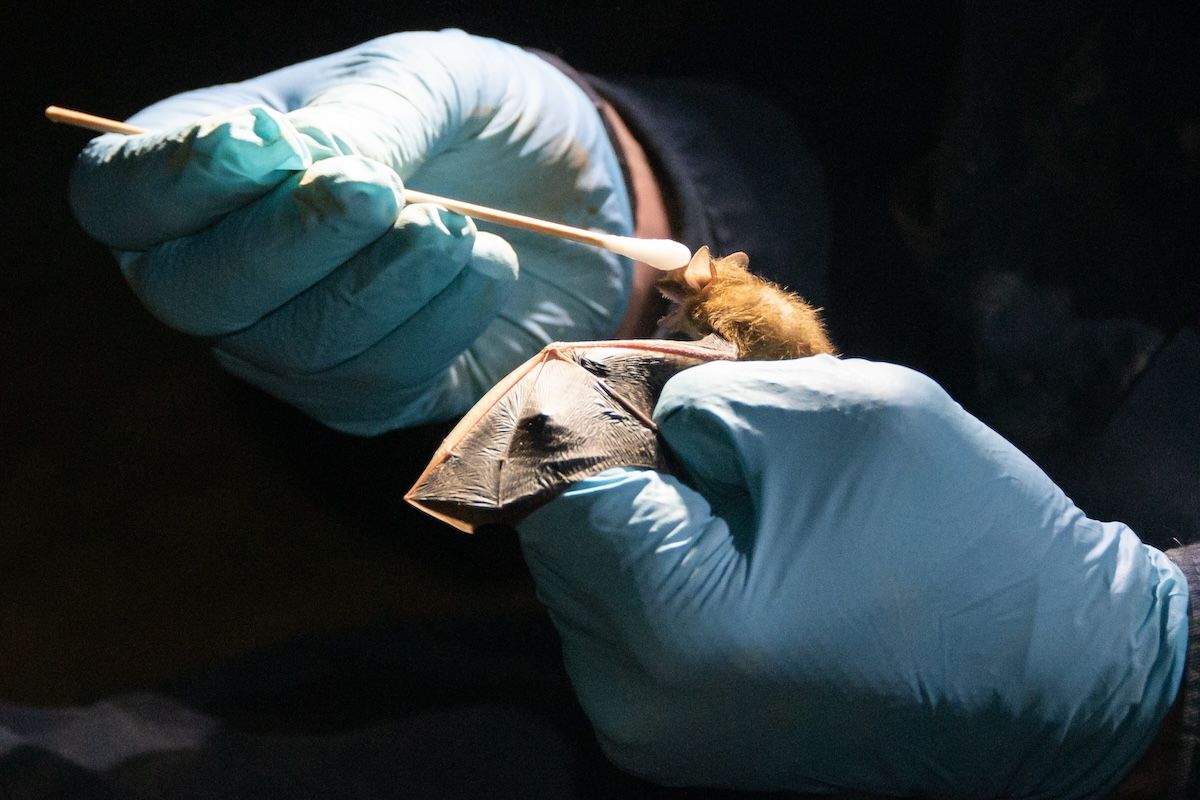In yet another example of the cascading effects of mass extinction and pesticide overuse, the decline of bats has been linked to a sharp rise in infant deaths.
Over the last two decades, North American bats have been devastated by a fungal disease called white-nose syndrome that has massacred millions of the flying mammals. It infects their skin and causes them to awaken from their winter hibernation early, often either freezing or starving to death. The invasive fungi responsible, Pseudogymnoascus destructans, truly lives up to the “destruction” part of its name. But the collapse of bat populations isn’t just harming nature — it’s hurting people, too.
Bats eat a lot of bugs, especially disease-carrying mosquitoes and other insects humans tend to hate. But less bats means that more pesticides are used to replace the natural function that has been lost. A new study in the journal Science tracked how bat declines were linked with an increase of pesticide use of more than 30 percent on average, which is alarming enough on its face given the numerous ill health effects linked to pesticides.
But the researcher, Eyal G. Frank, an assistant professor at the University of Chicago Harris School of Public Policy, went one step further and also examined the infant mortality rates due to internal causes of death (excluding homicides and accidents), finding that the death toll rose approximately 8 percent. Importantly, counties that didn’t see a decline in bat populations or an increase in pesticide use did not experience an increase in infant deaths.
“This result highlights that real-world use levels of insecticides have a detrimental impact on health, even when used within regulatory limits, which highlights the difficulties of assessing the public health impacts of pesticides when regulating them individually,” Frank wrote.
Of course, correlation is not causation. Just because infant deaths went up as pesticide use did does not necessarily mean that the two phenomena are connected. But it’s important to note that the increase of infant deaths went up at the same rate as the increase in pesticides, as well as the increased spread of P. destructans. In other words, this ratio is pretty hard to ignore.
“The staggered expansion of the wildlife disease supports the causal interpretation of the results,” Frank wrote. “Any additional alternative explanation would need to change along the expansion path of the wildlife disease around the same timing of its expansion.”
Overall, the research is yet another indicator that humans are intricately woven into the web of life, similar to how another recent study found the decline of vultures spread enough disease to kill half a million people. We are not separate from the ongoing mass extinctions all around us.
And it will only get worse, as Frank and other biologists have argued about a "biological holocaust," unless we take action to protect wildlife, including bats. As Frank puts it, “conserving bats can be beneficial for society. Additional funding for wildlife population monitoring and evaluating mitigation strategies for the adverse effects detailed above could greatly contribute to stabilizing and recovering bat population levels.”



Shares